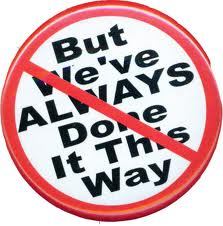From Vision to Leadership in School
- On 13-02-2018
Are you disrupting your school culture?
Society is in the midst of an extraordinary period of disruption – partly driven by technology but I believe mostly driven by the unintended consequences of the technology (short media cycles, constant online connectedness, increasing self-focus and self-gratification, perceptions of anonymity online, globalisation, etc).

The Age of Information seems to have led to the boom of contradicting advice, ideas, and opinions from a wide range of “experts”. I know I feel myself pulled in many directions and wondering how I manage my own balance let alone support my children to deal with the demands of life as it is now.
I see this playing out in a lot of schools as well as they struggle to deal with being pulled in many directions at once with demands from government, education systems, parents, students, staff, and society. I find that the perception of pressure and demands often leads schools to lose clarity and become less effective at developing effective learning cultures and meeting the needs of its stakeholders.
So what can school leaders do about this?
Operate with a shared vision
It all begins with a shared vision. Effective schools have leaders who articulate a clear and consistent vision of what the school values, where the school is headed, and why that matters, so that staff – students and all stakeholders have a clear future. As school leaders – and this includes senior and middle leaders – your most essential roles are to be the “explainers in charge” and the alignment team.
This means that you devote significant effort to getting others to embrace the vision and aligning the school processes, policies and practices so the school can authentically operate with a unified mindset. This will provide certainty and clarity of direction for all stakeholders thus avoiding the pitfall of people crafting their own version of the truth.
Be clear about expectations
Sharing a vision is one thing, but supporting staff to understand their role and what they are accountable for delivering is what guides visions into reality. Equally important is clarity around how responsibilities intersect, so that staff are positioned to support the collective team in accomplishing goals and discouraged from promoting individual agendas. We have worked with a number of schools to define teacher rubrics – a structure that has provided clarity of expectations and development for everyone.
Engage the right people
We found that, much like Jim Collins (author of “Good to Great”) found, “You need the right people on the bus, the wrong people off the bus, and the right people in the right seats.” In may take a number of years, and it can be quite challenging to do, but having the right people in the right leadership seats superpowers growth and development within a school. This is an extraordinarily powerful concept for choosing middle leaders within a school. Key to this aspect is knowing the strengths and areas of development for current and emerging leaders within the school.
Be timely about addressing issues
Schools are relational organisations and I find that a common pitfall within schools is not resolving staff performance problems in a timely manner. Rarely do these issues resolve themselves; they simply worsen over time and cause greater disruption to the school later on. Act compassionately, quickly and actually follow your policies (or develop a new one)!
Never underestimate the power of transparency
Among the most critical leadership principles for sustaining a healthy school is transparency about how decisions are made. The hallmark of a school in decline is a growth in decisions being made without the community having a say. When staff, students and/or parents don’t trust you, you’re not leading anybody anywhere. When trust in the promise of your school vision is lost, so is your school culture.
The development of leadership teams and teacher excellence is what we are deeply passionate about. Our focus is to create sustainable trust-filled learning environments for students, parents, teachers, and leaders.
To find our how we partner you to grow your leadership visit our Principal and School Leadership page
If you would prefer to discuss your specific needs email me; Adrian – adrian@intuyuconsulting.cm.au, David Tyson at the Australian Education Union (david.tyson@aeuvic.asn.au) OR the Teacher Development Centre


0 Comments